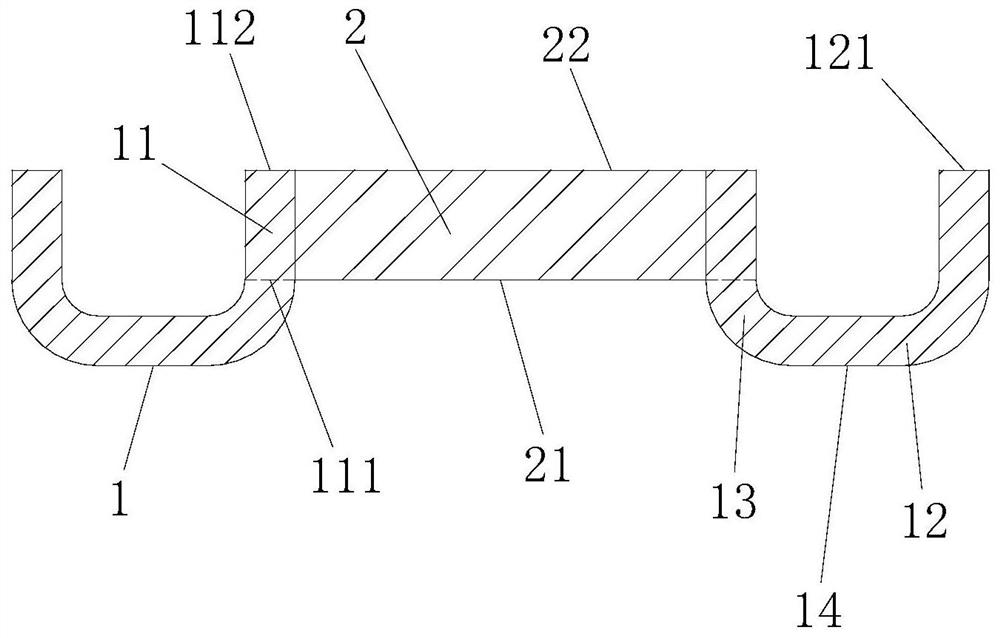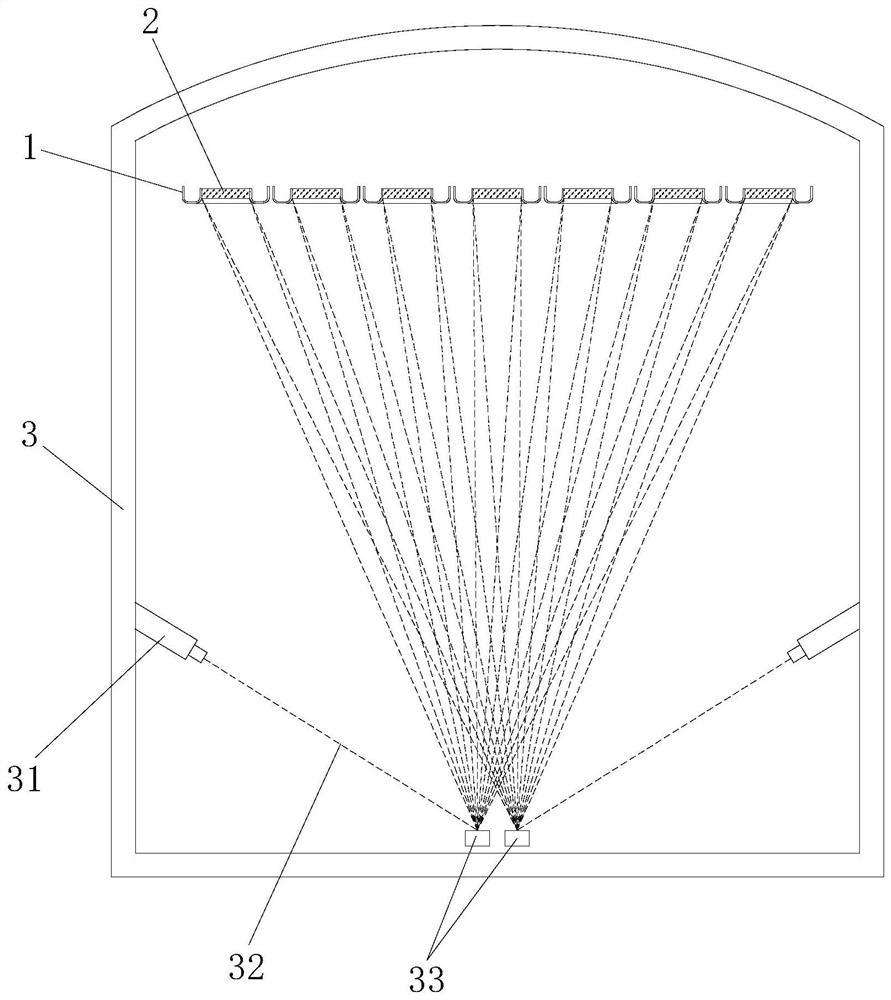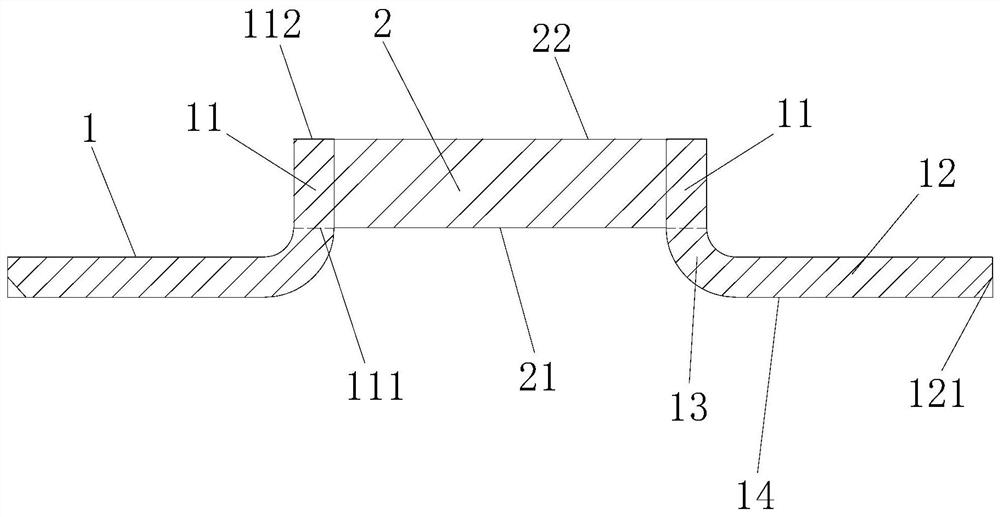An optical transmission window for atomic clocks
An optical transmission, atomic clock technology, applied in the field of atomic clocks, can solve the problem of batch coating of optical lenses, etc., and achieve the effects of ensuring coverage, reducing damage probability, and improving yield
- Summary
- Abstract
- Description
- Claims
- Application Information
AI Technical Summary
Problems solved by technology
Method used
Image
Examples
Embodiment 1
[0036] like figure 1 , 2 As shown, an optical transmission window for an atomic clock, the optical transmission window includes a sleeve 1 and an optical lens 2 arranged in the sleeve 1; the cylindrical wall of the sleeve 1 includes a vertical side wall portion 11, and an extension portion 12 located at the bottom end of the vertical side wall portion 11 and extending outward along the circumference of the bottom end of the vertical side wall portion 11; the extension portion 12 is Preferably, an arc-shaped transition portion 13 is provided between the vertical side wall portion 11 and the extension portion 12 . The end portion 121 of the extension portion 12 is the connection end where the optical transmission window and the metal shell of the vacuum atomic device are connected and fixed. Preferably, the cylindrical wall of the sleeve 1 is an integral structure.
[0037] The circumferential side wall surface of the optical lens 2 is sealed and fixed with the inner side wa...
Embodiment 2
[0042] like image 3 As shown, an optical transmission window for an atomic clock, the optical transmission window includes a sleeve 1 and an optical lens 2 arranged in the sleeve 1; the cylindrical wall of the sleeve 1 includes a vertical side wall portion 11, and an extension portion 12 located at the bottom end of the vertical side wall portion 11 and extending outward along the circumference of the bottom end of the vertical side wall portion 11; the extension portion 12 is in an inline structure; preferably, An arc-shaped transition portion 13 is provided between the vertical side wall portion 11 and the extension portion 12 . The end portion 121 of the extension portion 12 is the connection end where the optical transmission window and the metal shell of the vacuum atomic device are connected and fixed. Preferably, the cylindrical wall of the sleeve 1 is an integral structure.
[0043] The circumferential side wall surface of the optical lens 2 is sealed and fixed with...
Embodiment 3
[0046] like Figure 4 As shown, an optical transmission window for an atomic clock, the optical transmission window includes a sleeve 1 and an optical lens 2 arranged in the sleeve 1; the cylindrical wall of the sleeve 1 includes a vertical side wall portion 11, and an extension portion 12 located at the bottom end of the vertical side wall portion 11 and extending outward along the circumference of the bottom end of the vertical side wall portion 11; the extension portion 12 is in a "shaped structure; preferably, An arc-shaped transition portion 13 is provided between the vertical side wall portion 11 and the extension portion 12 . The end portion 121 of the extension portion 12 is the connection end where the optical transmission window and the metal shell of the vacuum atomic device are connected and fixed. Preferably, the cylindrical wall of the sleeve 1 is an integral structure.
[0047] The circumferential side wall surface of the optical lens 2 is sealed and fixed wit...
PUM
 Login to View More
Login to View More Abstract
Description
Claims
Application Information
 Login to View More
Login to View More - R&D
- Intellectual Property
- Life Sciences
- Materials
- Tech Scout
- Unparalleled Data Quality
- Higher Quality Content
- 60% Fewer Hallucinations
Browse by: Latest US Patents, China's latest patents, Technical Efficacy Thesaurus, Application Domain, Technology Topic, Popular Technical Reports.
© 2025 PatSnap. All rights reserved.Legal|Privacy policy|Modern Slavery Act Transparency Statement|Sitemap|About US| Contact US: help@patsnap.com



